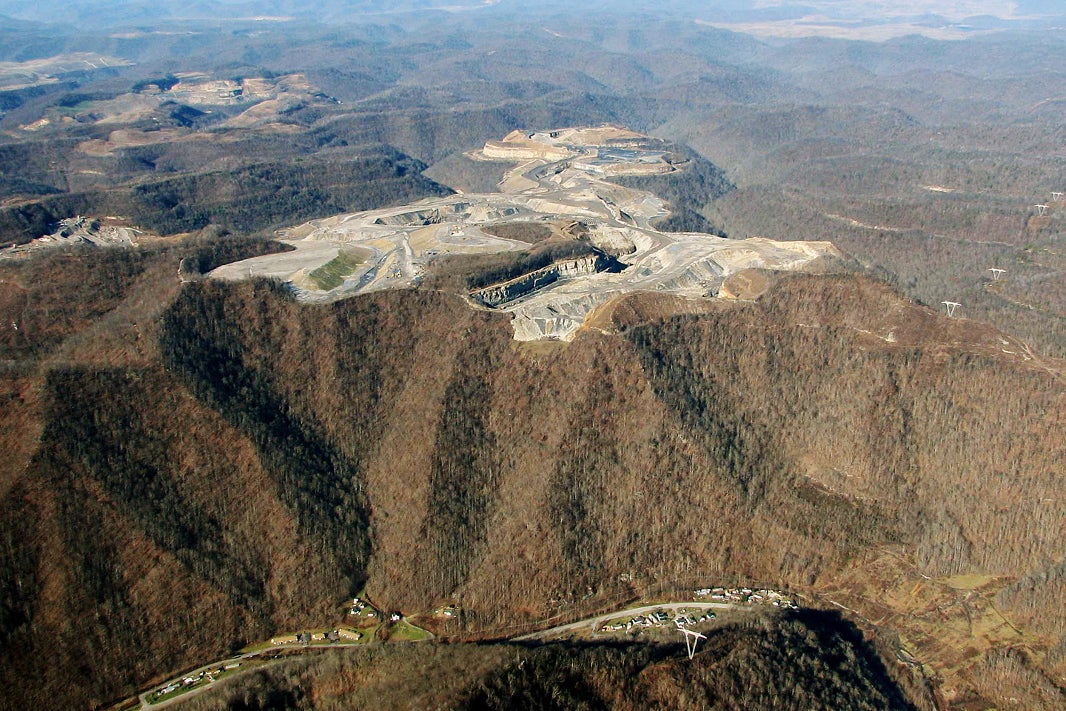Groups Urge Stronger Protections in New Stream Rule
Some notable improvement alongside troubling stream buffer provision
Contact
The Interior Department's Office of Surface Mining (OSM) released a new proposal revising national rules for surface coal mining. These proposed “stream protection rules” affect the ability of mountaintop removal mining companies to destroy or bury waterways near surface mining operations. Although today’s proposal includes some improvements to the current regime, it weakens other critical protections for Appalachian rivers and streams. Notably, the proposal weakens the “Stream Buffer Zone” rule, which prohibits harmful mining activities within 100 feet of Appalachian streams. Appalachian community groups and conservation groups are calling on the Obama Administration to adopt stronger stream protections in the final rule.
“Appalachian communities rely on the rivers and streams covered by these protections, and today’s proposal doesn't adequately safeguard those communities,” said Sierra Club Beyond Coal Senior Director Bruce Nilles. “The state governments in Appalachia have simply failed to protect our communities, and, and water from the destruction of mountaintop removal mining. We need the federal government to create thoughtful stream protections that ban valley fills and ensure an end to this destructive practice. As OSM finalizes this standard, we will continue to advocate strongly in order to ensure Appalachia gets the strongest protections possible.”
OSM’s proposal does contain some positive elements, say these groups. The proposed protections would require increased monitoring and data collection, provide some additional protection to downstream waters, and marginally increase the responsibility of mine operators to restore harmed areas. Additionally, the new OSM rule has clarified the term “material damage” in the federal surface mining law. The 1977 law prohibits coal mines from causing “material damage” to surface waterways and groundwater.
“After working for years to get the stream buffer zone enforced, only to have it taken away by the previous Administration, we have worked feverishly to get the stream protection rule as it is now called to do what its name implies: protect the streams in mining operations,” said Teri Blanton of Kentuckians For The Commonwealth. “We are hopeful it lives up to its name; if not, we intend to make sure our waterways are protected by working to ensure the stream protection rule does, indeed, protect.”
Without strong stream buffer protections, both streams and the people who rely on them for clean water are at greater risk. Mountaintop removal mining has already destroyed more than 2000 miles of streams in Appalachia through the use of valley fills, while thousands more miles have been poisoned with increased sediment, heavy metals, and other pollutants harmful to human and aquatic life. These valley fills stay on site and continue to pollute long after the mine itself has ceased operation.
“It is the responsibility of the Office of Surface Mining and state authorities to protect drinking water and wildlife habitat from the catastrophic effects of mountaintop removal mining. This proposal, though it does encourage increased safety monitoring and stream restoration, just doesn’t do the job,” said Senior Staff Attorney Jane Davenport at Defenders of Wildlife. “What we need are strong and well-defined mining rules that ensure the health of our nation’s lands and waters.”
"This has been an issue since the Bragg court challenge in 1998. Though hints of proposals through the ensuing years have never quite lived up to what a well-enforced 100 foot buffer zone would have done to end the destruction of headwater streams, it is long overdue that OSM make some attempt to clarify what is meant by stream protection. We can only hope that this proposed rule moves us forward," said Cindy Rank of the West Virginia Highlands Conservancy.
In a 2008 attempt to weaken stream buffer protections, the Bush Administration proposed a similar change, replacing the highly protective buffer zone requirement—which clearly prohibits harmful activities within 100 feet of streams—with a much weaker version. The version adopted by the Bush administration only called on mining companies and states to “minimize” direct disturbance to the extent deemed “reasonable”—a requirement many argue was so vague it was effectively unenforceable. The Bush rule was thrown out by a federal court in February 2014 because the Bush Administration had failed to consult with appropriate wildlife agencies about whether weakening the rule would jeopardize endangered species. The strong Stream Buffer Zone Rule has been in effect since then, but enforcement by state authorities remains uneven.
“This proposal doesn’t go far enough to protect streams and communities. In the final rule, the Obama Administration should change course and preserve the buffer that protects streams from direct mining damage,” said Earthjustice attorney Neil Gormley.
"Streams, particularly headwater streams, are important. We would applaud any attempt by the Office of Surface Mining to give them the protection that they need from damage due to mining,” said John McFerrin, past president of the of the WV Highlands Conservancy, former chair of the WVHC Mining Committee. “We would hope that if and when the rule becomes final it eliminates mining near or through streams."
The groups will also carefully scrutinize how the proposed rule may affect other types of destructive coal mining operations around the nation. Communities in various parts of the country have been severely harmed when longwall mining operations cause land to subside; strong protections are also needed to protect communities from other destructive methods of coal mining.
Read the proposed rule.

Additional Resources
About Earthjustice
Earthjustice is the premier nonprofit environmental law organization. We wield the power of law and the strength of partnership to protect people's health, to preserve magnificent places and wildlife, to advance clean energy, and to combat climate change. We are here because the earth needs a good lawyer.